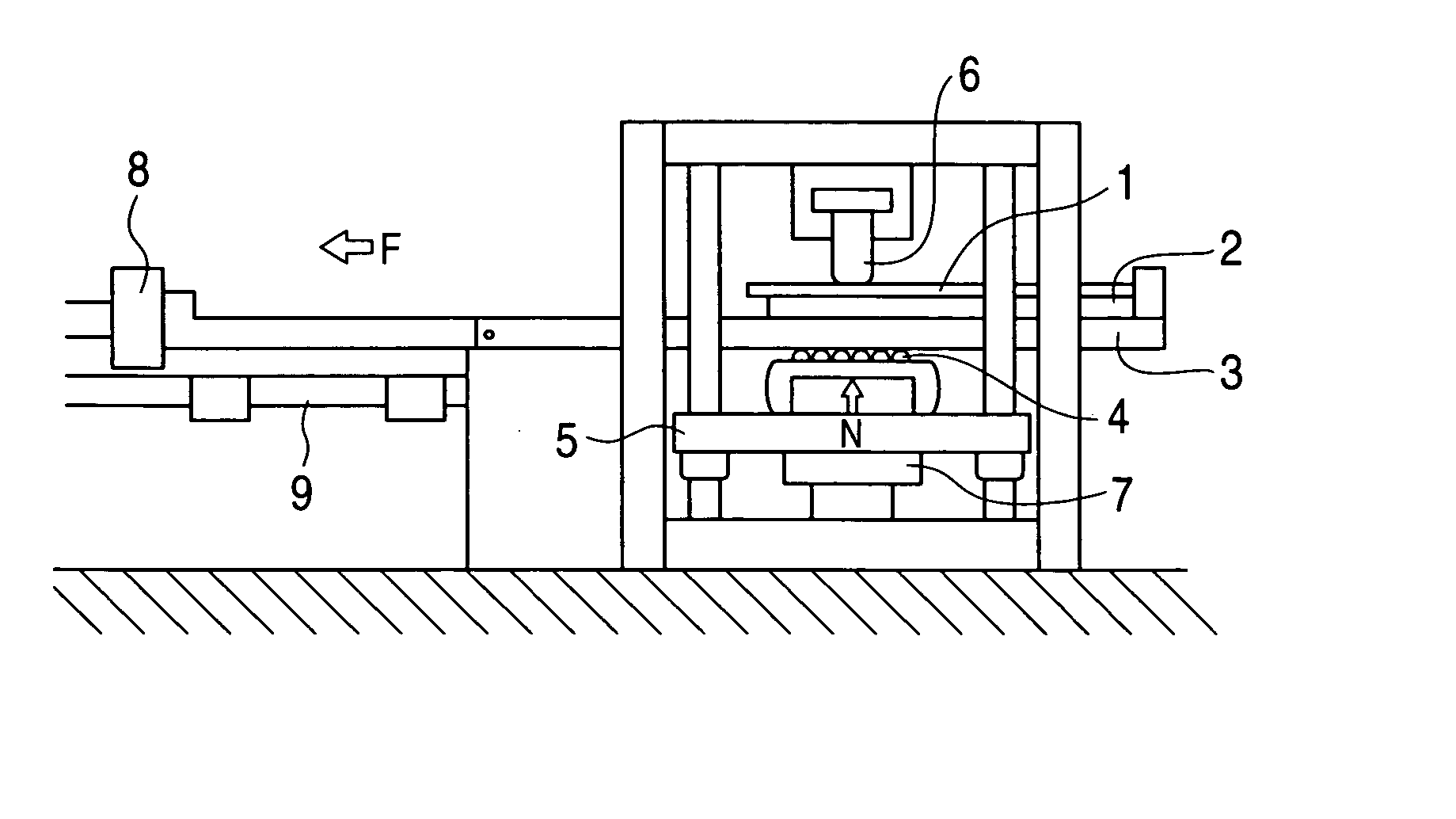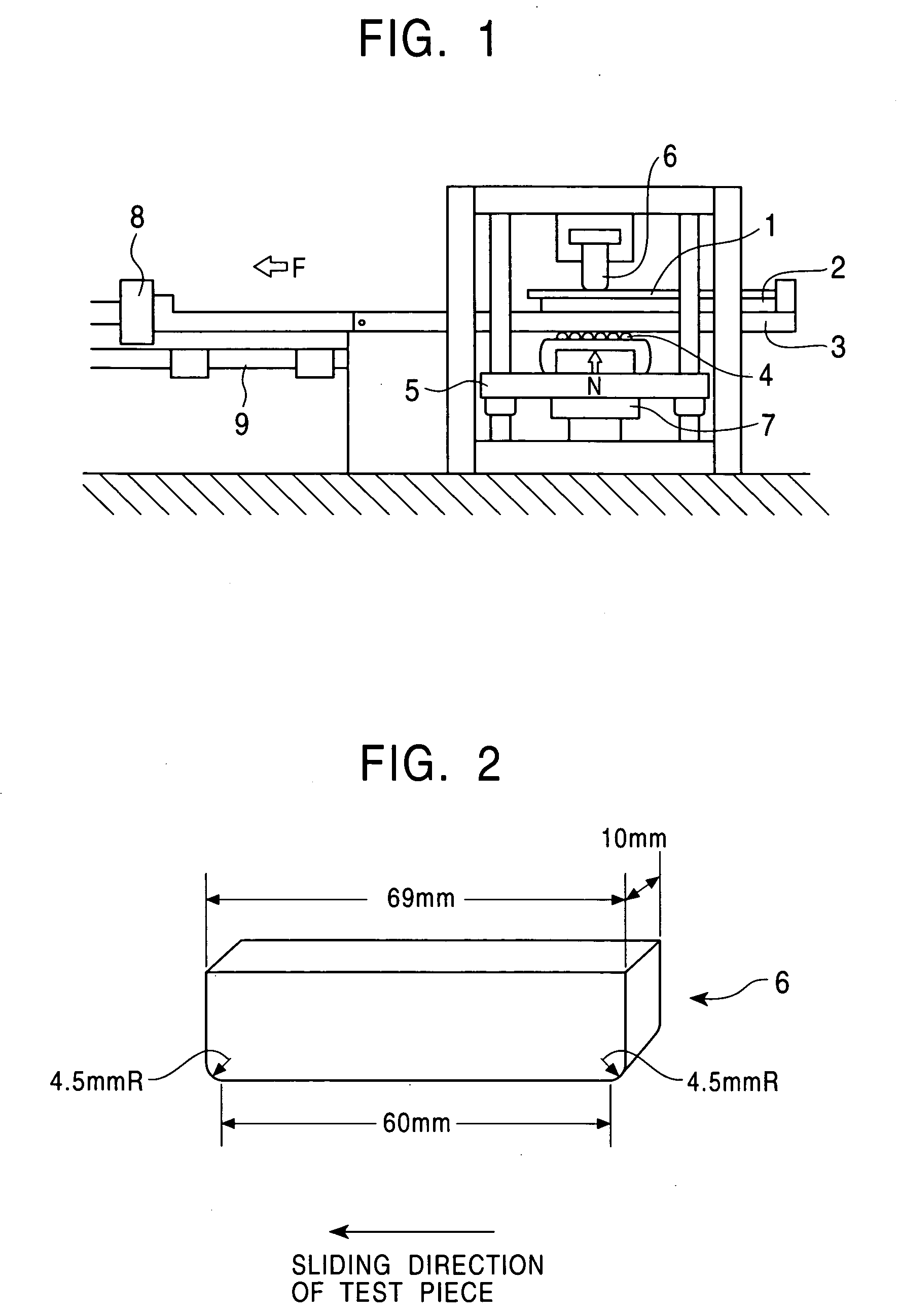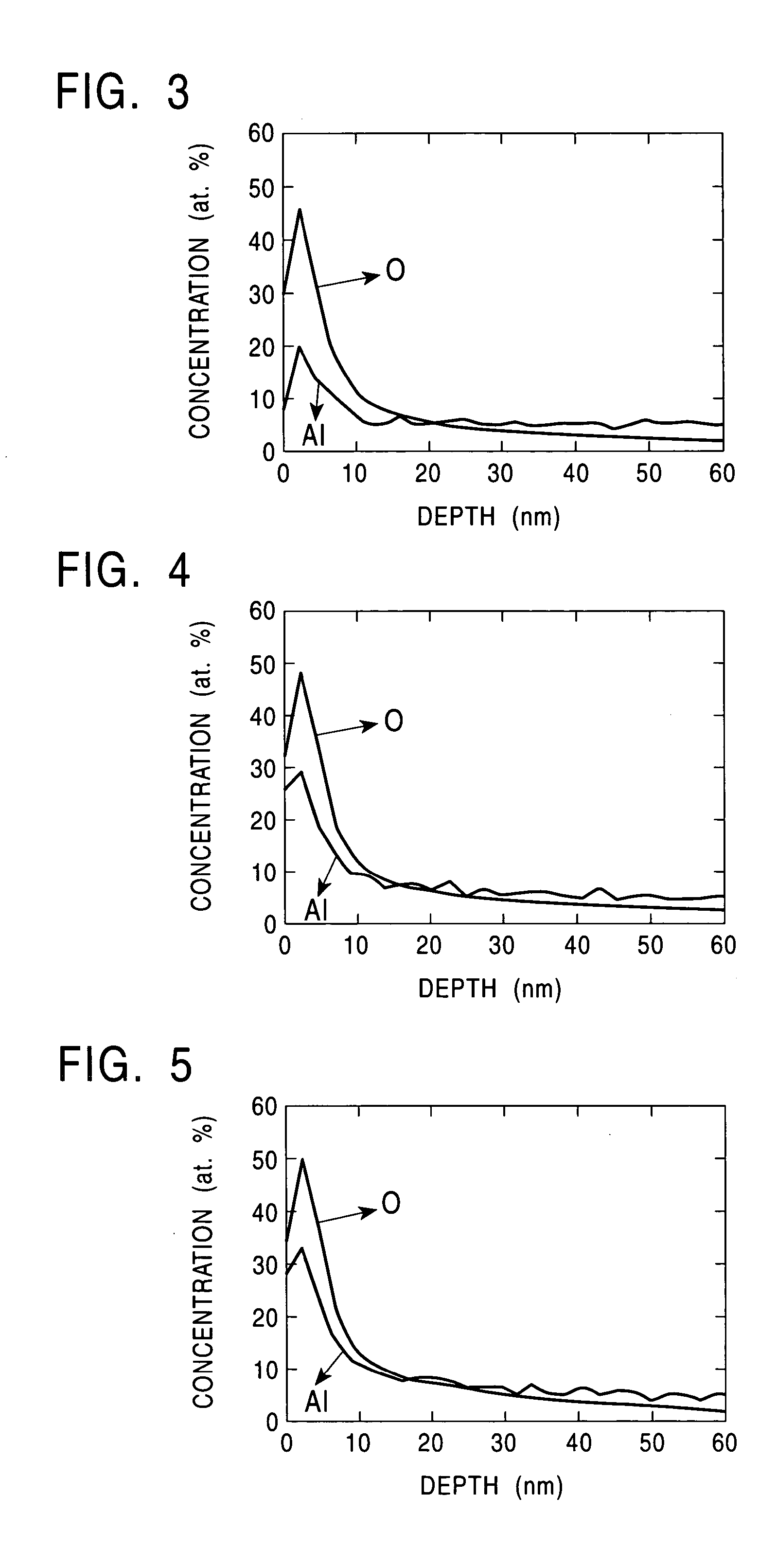Zinc hot dip galvanized steel plate excellent in press formability and method for production thereof
- Summary
- Abstract
- Description
- Claims
- Application Information
AI Technical Summary
Benefits of technology
Problems solved by technology
Method used
Image
Examples
embodiment 1
[0038] The present inventors have found that it is possible to obtain satisfactory press formability under extended sliding conditions by forming a Zn-based oxide along with an inherent Al-based oxide on the surface of a hot-dip galvanized steel sheet.
[0039] As described above, since an Al-based oxide layer is formed on the surface of a hot-dip galvanized steel sheet, it is possible to prevent adhesion between the steel sheet and a die during press forming. Therefore, it is believed to be effective in forming a thicker Al-based oxide layer in order to further improve sliding performance during press forming. However, in order to form a thick Al-based oxide layer, the steel sheet must be oxidized at high temperatures for a long period of time, which is practically difficult. During such an oxidation period, an Fe—Zn alloying reaction advances gradually, resulting in degradation in plating adhesion. On the other hand, in order to form a Zn-based oxide layer, the Al-based oxide layer ...
example 2
[0090] A hot-dip galvanized layer with a Zn coating weight of 60 g / m2 was formed on a cold-rolled steel sheet with a thickness of 0.8 mm, and then temper rolling was performed with respect to seven samples. Two types of temper rolling were performed. In temper rolling Type X, rolling was performing using a discharge dull roller with a roughness Ra of 3.4 μm so that the elongation was 0.8%. In temper rolling Type Y, rolling was performed using a roller with a roughness Ra of 1.4 μm and using a shot blasting technique so that the elongation was 0.7%. Additionally, in temper rolling type Y, with respect to the steel sheet on which oxidation treatment was not performed, the contact area rate of the roller was evaluated to be about 20% using a scanning electron microscope at an accelerating voltage of 0.5 to 2 kV. The contact area rate of the roller was determined by measuring the area of the region with which the roller was brought into contact based on a secondary electron image of the...
example 1
[0150] A hot-dip galvanized layer was formed on a cold-rolled steel sheet with a thickness of 0.8 mm, and then temper rolling was performed. In some samples, before or after the temper rolling operation, activation treatment was performed by bringing the steel sheet into contact with a solution in which the pH was varied by changing the concentration of a sodium hydroxide-based degreaser FC-4370 (manufactured by Nihon Parkerizing Co., Ltd.) for a predetermined time.
[0151] Each of the samples subjected to the activation treatment and the temper rolling operation was immersed in a treatment liquid shown in Table 3 for 2 to 5 seconds, and the amount of the liquid on the surface of the sample was adjusted to 3 g / m2 or less by squeeze rolling. The sample was left to stand in air for a predetermined time at room temperature. The standing time was changed depending on sample.
TABLE 3Fe ionTreatmentSodium acetateFerrous sulfateconcentrationpHliquid No.trihydrate (g / l)heptahydrate (g / l)(g / ...
PUM
| Property | Measurement | Unit |
|---|---|---|
| Temperature | aaaaa | aaaaa |
| Fraction | aaaaa | aaaaa |
| Fraction | aaaaa | aaaaa |
Abstract
Description
Claims
Application Information
 Login to View More
Login to View More - R&D
- Intellectual Property
- Life Sciences
- Materials
- Tech Scout
- Unparalleled Data Quality
- Higher Quality Content
- 60% Fewer Hallucinations
Browse by: Latest US Patents, China's latest patents, Technical Efficacy Thesaurus, Application Domain, Technology Topic, Popular Technical Reports.
© 2025 PatSnap. All rights reserved.Legal|Privacy policy|Modern Slavery Act Transparency Statement|Sitemap|About US| Contact US: help@patsnap.com



